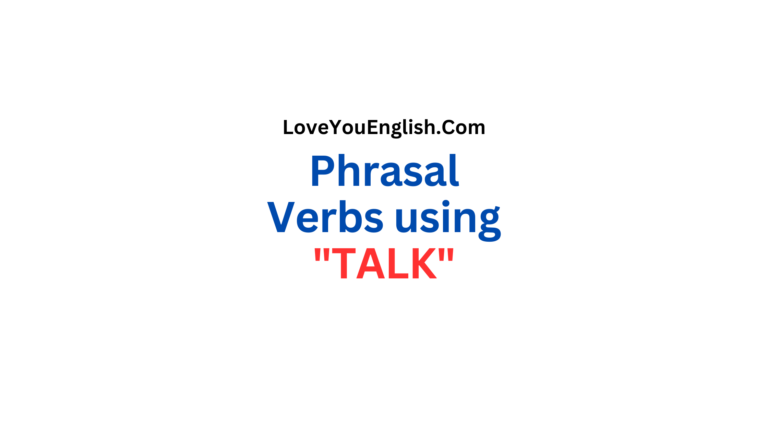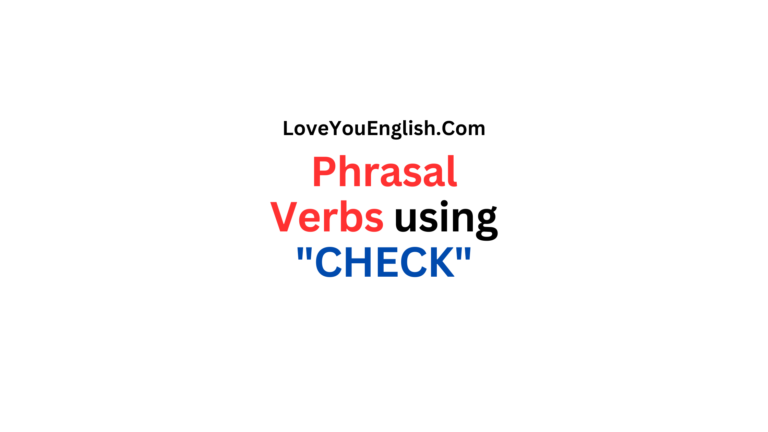How to Practice Phrasal Verbs with Friends
Phrasal verbs are an essential part of the English language. They are combinations of verbs and prepositions (or adverbs) that have a different meaning than the verb on its own. For example, “give up” means to quit, which is different from just “give.” Learning phrasal verbs can be challenging because they often don’t make sense when you translate them literally. But don’t worry! A great way to learn them is by practicing with friends.
In this post, I’ll teach you how you can practice phrasal verbs with friends and make it fun and easy.
Why Should You Practice Phrasal Verbs?
Before we dive into how to practice phrasal verbs with friends, let’s first understand why they are so important. Phrasal verbs are widely used in everyday conversations, movies, TV shows, and books. If you want to sound more like a native speaker and improve your fluency, knowing phrasal verbs is essential.
Moreover, learning them in a relaxed, informal setting with friends can make the process easier and more enjoyable. You’ll start to use phrasal verbs naturally in your conversations, and this will improve your confidence when speaking English.
Tip 1: Play Phrasal Verb Games
One of the best ways to learn phrasal verbs is by making learning fun. You can create games that help you and your friends practice these verbs without feeling like you are studying. Here are a few fun games you can try:
1.1. Phrasal Verb Charades
In this game, one person acts out a phrasal verb while the other players try to guess what it is. You can write down a list of phrasal verbs on pieces of paper, fold them, and put them in a box. Take turns drawing a phrasal verb and acting it out. For example, if you draw “pick up,” you might act like you are picking something up from the floor.
This game is a fun way to remember the meanings of phrasal verbs. It also helps you get used to how they are used in real situations.
1.2. Phrasal Verb Bingo
Create bingo cards with different phrasal verbs in each square. As the game host, you can read out definitions or give clues related to the phrasal verbs, and the players mark the correct phrasal verb on their card. The first person to complete a row or full card shouts “Bingo!” and wins.
This game is simple and encourages quick thinking, which is great for remembering phrasal verbs in context.
1.3. Phrasal Verb Memory Match
You can create cards with a phrasal verb on one side and its meaning on the other. Shuffle the cards and place them face down on a table. Players take turns flipping over two cards at a time to match the phrasal verb with its meaning. The person with the most matches wins.
This is a great way to reinforce your memory and understanding of phrasal verbs.
Tip 2: Use Phrasal Verbs in Conversations
Talking with your friends is the best way to practice phrasal verbs in real-life situations. Try to use new phrasal verbs you learn in conversations. It’s okay if you don’t use them perfectly at first. The more you practice, the more natural it will feel.
2.1. Start Simple
You don’t need to use complex phrasal verbs to start practicing. Begin with common ones that you can use every day. Some examples include:
- Get up: to rise from bed.
- Hang out: to spend time with friends.
- Look after: to take care of someone.
- Turn on: to start a device or light.
- Pick up: to lift something.
Try using these phrasal verbs in a sentence, such as:
- “I need to get up early tomorrow.”
- “Let’s hang out this weekend.”
- “Can you look after my dog while I’m away?”
- “Please turn on the TV.”
- “I need to pick up my books from the floor.”
2.2. Share Stories
A great way to practice phrasal verbs is by sharing stories with your friends. Tell them about your day, your plans, or any interesting events that happened. While telling your stories, try to use as many phrasal verbs as possible. This will help you remember them and use them naturally.
For example, you could tell a story like this:
“Yesterday, I ran into an old friend while I was walking to the store. We caught up for a few minutes, then I had to rush to finish some work. Later, I picked up my groceries and went back home.”
Tip 3: Create a Phrasal Verb Challenge
You can make phrasal verb practice even more fun by turning it into a challenge. Set a goal to learn a certain number of phrasal verbs by the end of the week, then challenge your friends to use as many of them as possible in their conversations.
For example, you could challenge each other to use 10 new phrasal verbs in a single conversation. At the end of the day, you can quiz each other on the meanings of those phrasal verbs. This will help you all remember them better.
Tip 4: Watch TV Shows and Movies Together
Watching TV shows and movies in English is a great way to hear phrasal verbs used in context. If you watch something with your friends, make it a goal to identify the phrasal verbs used by the characters. Write them down, and then use them in your own conversations later.
Some great TV shows and movies for learning phrasal verbs include:
- Friends: This popular sitcom is full of everyday expressions and phrasal verbs.
- How I Met Your Mother: The characters often use informal, natural English, which includes many phrasal verbs.
- The Office: This show has a mix of formal and informal English, with lots of opportunities to hear phrasal verbs.
While watching, you can pause and discuss the phrasal verbs that are being used. Try to guess the meanings based on the context, and then check them in a dictionary to see if you were right.
Tip 5: Use Phrasal Verb Flashcards
Flashcards are a simple but effective way to study phrasal verbs. You can make your own flashcards or use apps like Anki or Quizlet to create digital flashcards. On one side, write the phrasal verb, and on the other, write its meaning and an example sentence.
You and your friends can quiz each other by taking turns drawing cards and trying to guess the meaning or usage of the phrasal verb. You can also play a game where one person says a phrasal verb and the others have to come up with an example sentence.
Tip 6: Write Short Stories Together
Another fun way to practice phrasal verbs with friends is by writing short stories together. You can take turns writing a sentence or two, and each person must include at least one phrasal verb in their part of the story. After you finish the story, read it aloud and discuss the phrasal verbs you used.
Here’s an example:
“One day, I woke up late and rushed to work. When I got there, I realized I had forgotten my keys at home, so I had to turn around and go back to get them.”
Writing stories like this helps you practice phrasal verbs in context and gives you a chance to be creative.
Tip 7: Learn Phrasal Verbs in Groups
If you have a study group or a circle of friends who are also learning English, you can learn phrasal verbs together. Set up a regular meeting to practice. Each person can take turns teaching a few new phrasal verbs and their meanings. Then, practice using them in conversations with one another.
You can also create worksheets, quizzes, and mini-tests to help reinforce the phrasal verbs you’ve learned.
Conclusion
Practicing phrasal verbs with friends is one of the best and most enjoyable ways to learn them. By making learning interactive and fun, you’ll be able to remember phrasal verbs more easily and start using them in everyday conversations. Whether you play games, watch movies, or simply chat, practicing with friends will help you sound more natural and confident in your English.
So, gather your friends, try some of these tips, and start practicing phrasal verbs today! The more you practice, the more fluent and comfortable you’ll become with these important expressions.
Happy learning!








